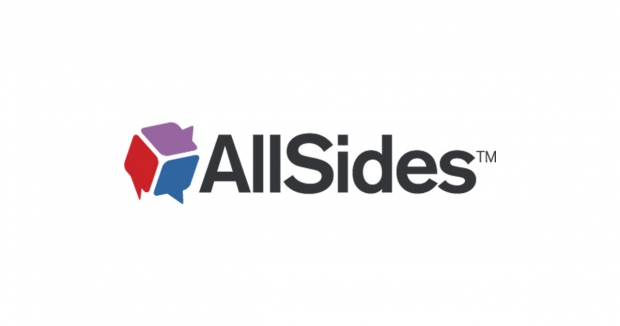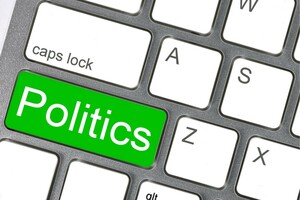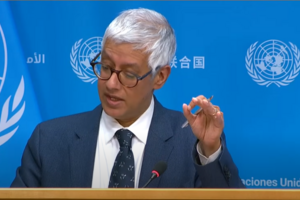Where AllSides Team Members Fall on the Political Spectrum

Everyone is biased — that is one of the core beliefs here at AllSides. The best way to provide credible, balanced news is to have people with different political biases and leanings work together, supporting systems to reliably provide more balanced coverage.
That is what we do at AllSides. To create balanced, unbiased news and trustworthy media bias ratings, AllSides has a politically diverse team.
And we are very transparent about that (and wish more news media were just as transparent about the political leanings of their staff).
Take a look at our team page — everyone that joins us takes this quiz to test their bias. We often reassess where we land, as beliefs and views can change over time.
But that is just one way to measure and reveal political leanings.
The New York Times (Lean Left) recently released a new political bias quiz: If America Had Six Parties, Which Would You Belong To?
What were our results? Here’s a map of the leanings of everyone on AllSides’ team who regularly writes, edits, curates or creates our content, or contributes to media bias ratings:
Our team is all over the map, which helps us to do a good job of staying balanced.
We’re not perfect — we have more social liberals than social conservatives on our day-to-day team (the conservatives being Julie, Director of Marketing and Bias Ratings, Beth, our Politics Editor. Jacob is the Director of the Red Blue Dictionary). Yet we also have a roughly equal number of economic liberals and conservatives — four of us being more economically conservative, and five being more liberal. Some people are closer to The New York Times’ imaginary New Liberal Party (Samantha, our Director of Product), others are closer to the Growth and Opportunity Party (John, our CEO, and Henry, our Managing Editor), and others are closer to the American Labor Party (Scott, our co-founder and CTO, and Andrew, our Research Assistant and Data Journalist).
This diversity of views and beliefs is particularly important for our Editorial Reviews, which are a key part of our Media Bias Ratings. It’s also important for curating news and writing content, because we constantly act as a check on one another. If someone writes content that is more than two paragraphs long, we always have someone on the other side check it. The longer and more complex the content, the more eyeballs look at it before it goes live.
We work together to catch any blind spots and to include multiple perspectives. We keep an eye out for framing or word choice that the other side would find unfair. Sometimes we have debates about what word choice to use (is it a protest or riot? Undocumented immigrant or asylum-seeking migrant?) Sometimes, someone will bring up stories that aren’t coming up a lot in the other side’s bubble — maybe the left is hearing more about climate change, while the right is hearing about covid lockdown restrictions in Australia.
The New York Times says its six imaginary parties “reflect the underlying factions — and divides — within the Democratic and Republican parties.” Here are the descriptions they give:
Progressive Party — The Progressive Party is focused on equity and racial justice, with a strong vision of inclusive social democracy. Its strongest support comes from politically engaged, highly educated younger people, especially women.
The New Liberal Party — The New Liberal Party is the professional-class establishment wing of the Democratic Party. Members are cosmopolitan in their social and racial views but more pro-business and more likely to see the wealthy as innovators.
American Labor Party — The American Labor Party is focused on economic populism, with an appeal to working-class Democrats who don’t have college degrees and don’t follow politics closely. It is more moderate on social and cultural issues compared with the Progressive Party, but also more diverse, appealing to many working-class Hispanics.
Growth and Opportunity Party — The Growth and Opportunity Party is the socially moderate, pro-business wing of the Republican Party. It is the heir to the old moderate “Rockefeller Republican,” the East Coast wing of the G.O.P.
Patriot Party — The Patriot Party is the party of Donald Trump’s 2016 primary campaign: the coalition of the small town, white working-class Americans who feel left behind by globalism and condescended to by cosmopolitanism. It is economically populist and strongly anti-immigration. Its strongest support among lower-income conservatives comes from exurban America.
Christian Conservative Party — The Christian Conservative Party is focused centrally on issues of religious liberty and morality, with very limited government. It will find stronger support among the most politically engaged and affluent, especially men.
We are always open to feedback. If you ever see a blind spot in our content, or there’s something you want to bring to our attention, don’t hesitate to email us feedback.

May 21st, 2024


May 16th, 2024

May 16th, 2024